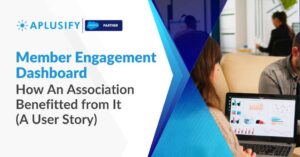According to reports on average, companies around the globe function with the fear that around 26% of their data is dirty. This collection of bad data in their systems results in losses of around 15% to 25% on revenue. Every year US economy approximately faces a $3 trillion loss.
Dealing with dirty data doesn’t only impact your pockets and time but greatly impacts long-term organizational goals and internal staff morale. Since tackling dirty data costs so much – it’s essential to understand where it comes from.
Before taking preventive measures or cleaning a mess, prioritize detecting the source of the problem. When addressing bad data, it’s equally important to understand why and how we actually store bad data in our system. Preventing bad data from entering your system will save you lots of money and effort instead of pulling reports and cleansing the database when bad data has already infested your system. There can be many sources of bad data, but majorly there are four sources that become the medium of this transmission:
Legacy Data Migration
Many organizations have complex and old business CRM systems. With technology moving forward with time, now businesses have plenty of cloud alternatives, which come with many benefits and long-term promises. Therefore, at one point, organizations decide to depart with their old systems towards new promising ones.
It’s obvious that while migrating, they do not want to leave their valuable member data behind, so they simply need to migrate this data into their new systems. However, migrating legacy data is hard. From the beginning of the deployment process around 50% of the effort is consumed by Data Migration activities.
When proceeding, do not underestimate the quality of your legacy data. Imagine a scenario that there may be mines of unused historical data hidden in your database that could be activated when transferred into a new system. All that duplicate and inaccurate data are now sitting in your new system, leading you to proceed with Data Cleansing that could go worse if your data has doubled due to duplication.
Third-Party API
Scenarios where organizations want another system integrated into their CRM, can lead to Data quality mishaps. This again can create a similar scenario where your system data is exposed during migration resulting in the transfer of bad data.
Suppose you are all set to have an Event Management App, a Third Party API, integrated into your system. If one of the systems is carrying bad data, during the data flow, it can transfer into both the system and double into the amount leading to multiple sets of dirty data and problems for you to tackle.
Jobs Not Scheduled Properly
When you have multiple systems running in your environment there are a lot of tasks running in the background as scheduled by your technical team. In the case of synching, if the task is not tested or scheduled properly, then data mismanagement can occur.
For example, if a user has updated his address in a system and that has to be synched in another system, then a failed synching can result in the target system carrying old and inaccurate data.
Incorrect User Inputs
Your systems are constantly changing and flooded with data from members and the internal team. Without frequent validations and checkups, the lack of uneven formats in inputs can lead to inaccuracy during analytics and reports as your system might fail to read certain units that are different from the others.
It’s important to remember that in many commonly used data resources like date of birth, height, weight, and currency, the units used across the glove are different. However, for your system, it’s ideal to follow a common standardized format. Failing can lead to data errors and long-term inconsistencies.
Dealing with Dirty Data can be a complex yet extremely essential process. We cannot stress enough how important it is to prioritize frequent Data Health Checks monitored by a dedicated team of experts committed to ensuring that your association is always protected against major sources threats in your database. Aplusify can help you create and implement an integrated team to detect and deal with bad data if found in your system. With Aplusify as an extension of your team, you’ll harness the power of the data quality with greater analytics and a streamlined process. Keep watching this space for more information on sources of bad data , and we are positive that our webinar on Data Health Check will be of great
About Aplusify
Aplusify provides associations, nonprofits, and higher education institutions with the capacity and capability of maximizing their Salesforce platform. Our team of Salesforce-certified experts alleviates the technical weight of managing and implementing Salesforce so that you can focus on strategy and organizational mission. Find out how we can save you time, money, and stress with our Salesforce Managed Services.









